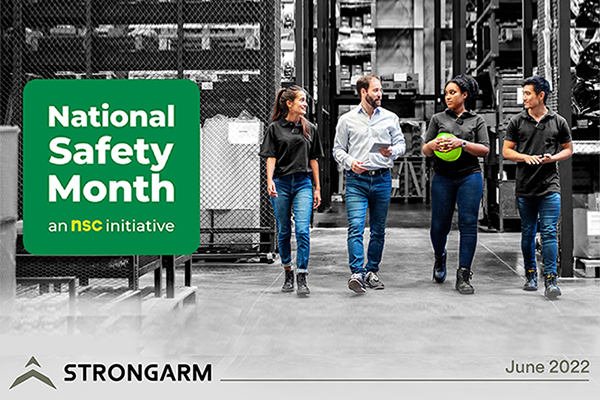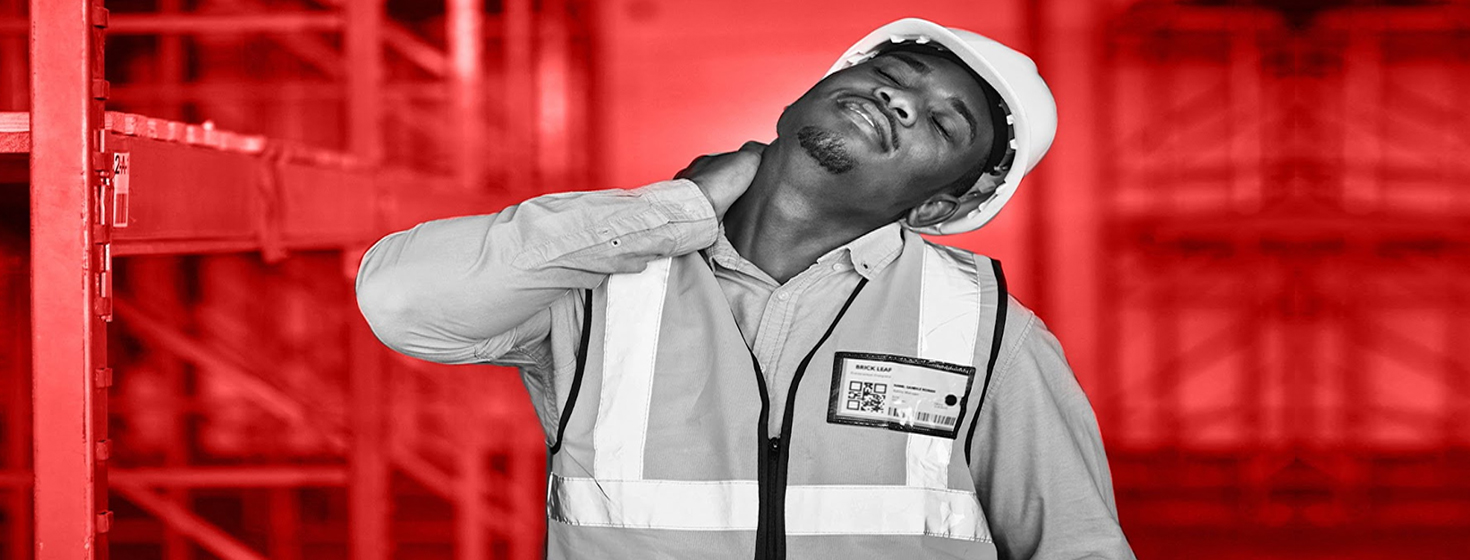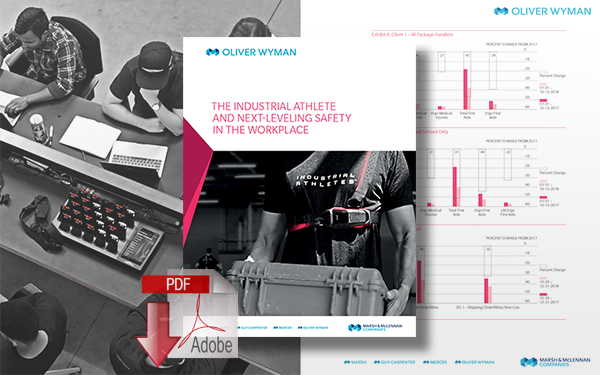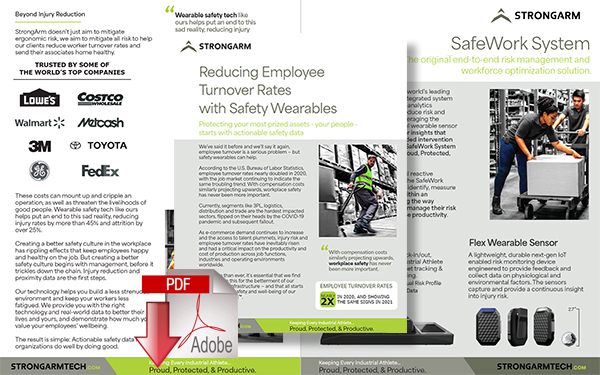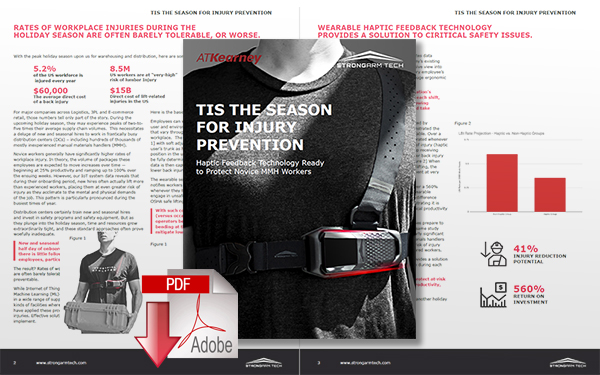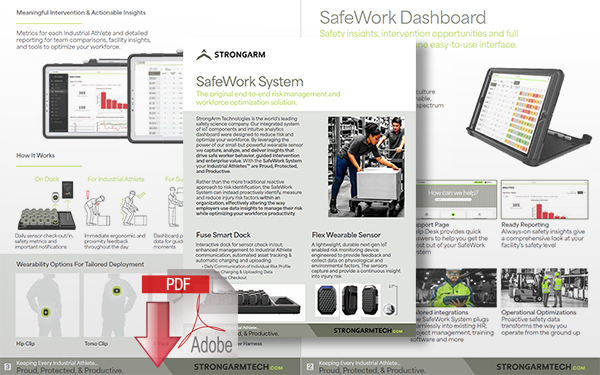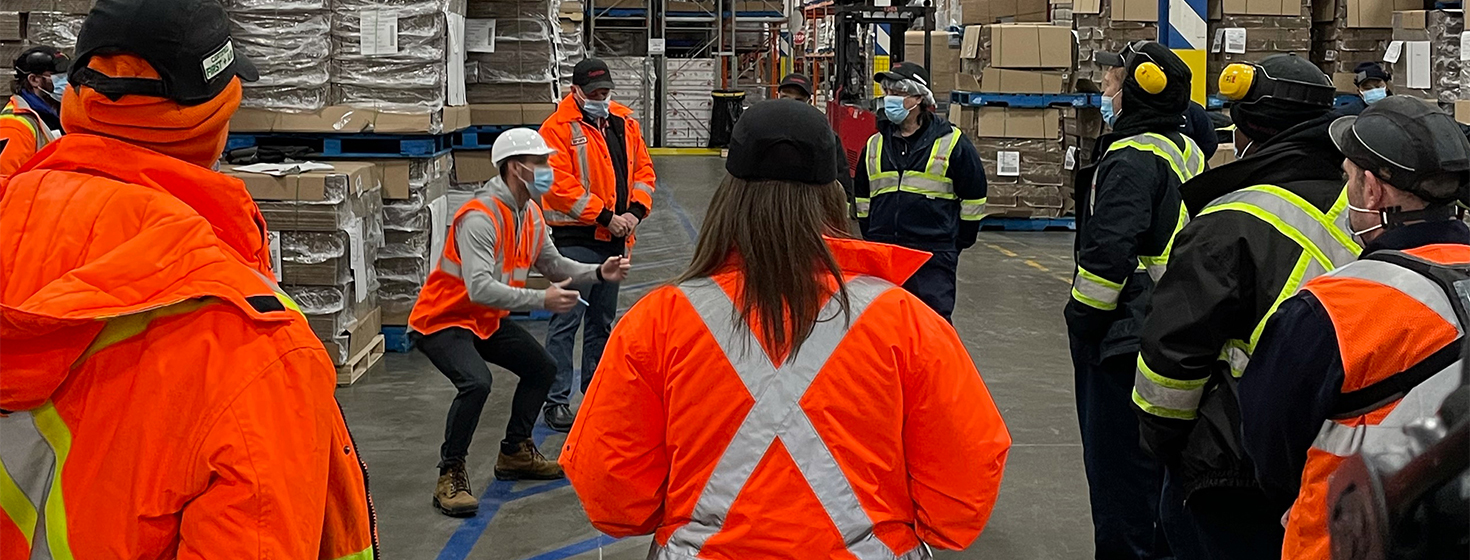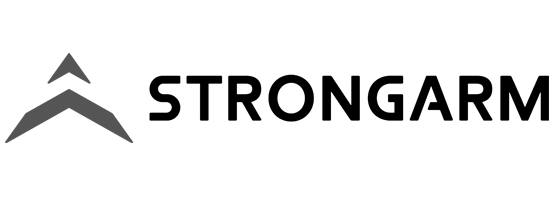Keeping Each Other Safe - June National Safety Month
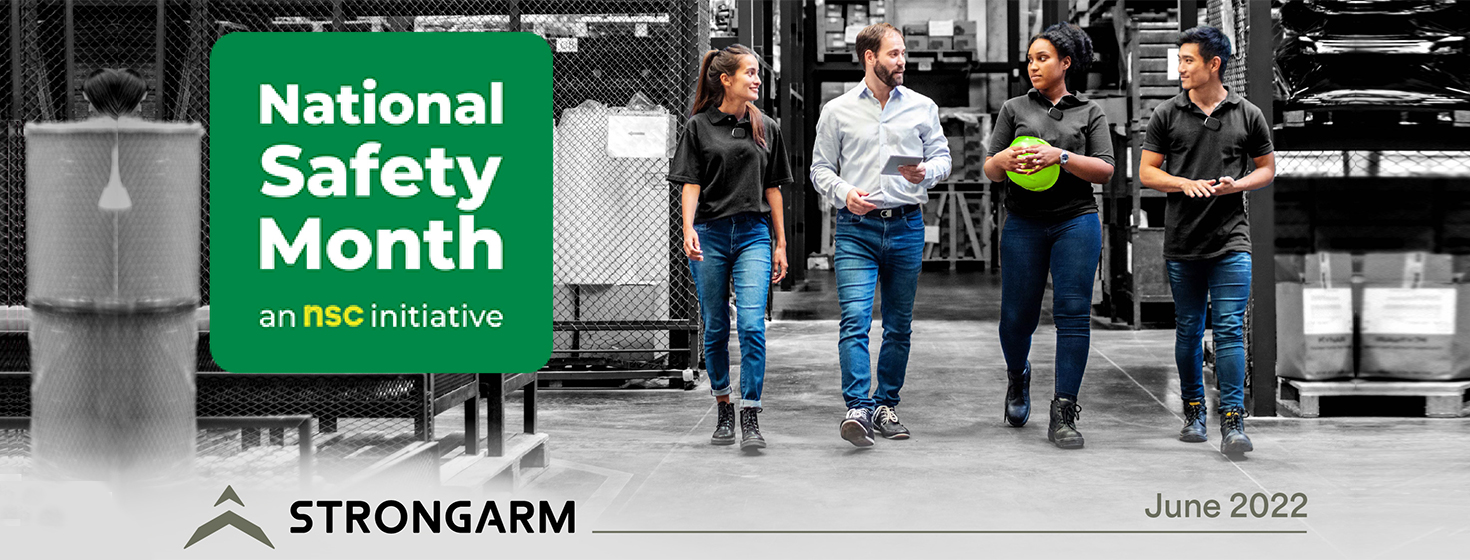
Join the National Safety Council this June 2022 for National Safety Month - the annual observance to help keep each other safe from the workplace to any place.
National Safety Month
Each June, we celebrate National Safety Month. While we all know safety is important year-round, this month we work to highlight efforts to prevent injury and death, from the workplace to any place.
In this blog, the National Institute for Occupational Safety and Health (NIOSH) and the National Safety Council (NSC) are highlighting research and prevention efforts in the four themed areas for each week of the month: musculoskeletal disorders (MSDs); workplace impairment; injury prevention; and slips, trips, and falls. Help us spread the word about safety. We hope you follow along with the campaign activities, week-by-week, and participate as the month unfolds.
Download and share the free safety materials from NSC including a poster, podcasts, facts sheets, articles, and more; and visit the NIOSH website to stay safe this month and all year long.
Week 1: Musculoskeletal Disorders (MSDs)
NIOSH: The NIOSH Musculoskeletal Health Program works to reduce the burden of work-related MSDs through a focused program of research and prevention that protects workers, helps management mitigate related risks and liabilities, and helps practitioners improve the efficacy of workplace interventions. A recent blog post summarizes NIOSH research to protect workers from MSDs over the last 50 years. Technology has a role to play in MSD prevention. A series of webinars highlights how emerging technologies such as wearable technologies, exoskeletons, and computer vision can reduce work-related MSDs. MSD prevention is part of Healthy Work Design. For more information see the NIOSH website Ergonomics and Musculoskeletal Disorders.
NSC: Overexertion (e.g., lifting, pushing, pulling, holding, or carrying objects) and bodily reactions have long been the leading cause of work-related injuries and illnesses in the U.S., with the recent exception of 2020 due to COVID-19. Every worker deserves to work in an environment where their safety is valued and risks of musculoskeletal disorders are evaluated and minimized. The NSC has been working on several key initiatives to prevent these ergonomic injuries through the MSD Solutions Lab, of which NIOSH is a founding member of its advisory council.
NSC encourages companies and organizations to protect their most valuable assets – their workers. By taking the MSD pledge, you will join a growing community of employers committed to sharing ergonomic solutions and cutting-edge insights, enhance the wellbeing of your workers, gain access to free tools, events, and training, strengthen your safety culture and be able to assess your progress.
Changing the approach to MSD risks can provide relief to millions of workers and save employers the costs of physical and psychological disability. In addition, many technologies that reduce MSD risk also make it easier for workers to perform their tasks, directly enhancing productivity. By investing in workplace safety, employers can improve their bottom line, strengthen retention, reduce absenteeism and improve workers’ lives on the Jobsite and beyond.
Related: What is an Ergonomic Injury and How Can it Be Prevented?
Week 2: Workplace Impairment
NIOSH: The opioid crisis is taking a devastating toll on parts of the U.S. workforce. High rates of opioid overdose deaths have occurred in industries with high injury rates and physically demanding working conditions such as construction, mining, and fishing. Workplaces have the opportunity to play a critical role in improving the safety and well-being of workers. A recovery-supportive workplace aims to prevent work-related factors that could cause or extend a substance use disorder while making it easier to seek and receive appropriate care and maintain recovery. The NIOSH opioid webpage provides more information for workers and employers, including resources related to medication-assisted treatment and Naloxone.
Substance use/misuse is not the only work-related issue that may result in impairment in the workplace. Fatigue can affect any worker in any occupation or industry, with serious consequences for worker safety and health. Fatigue can slow down reaction times, reduce attention or concentration, limit short-term memory, and impair judgment. Work-related fatigue is often related to nonstandard schedules, such as night shift work and extended work hours, which can disrupt or shorten sleep. However, there are other factors such as physically demanding work, or hot environments which can affect fatigue. For more information on managing fatigue such as online training, and fatigue detection technologies, please visit the NIOSH Center for Work and Fatigue Research.
The mental health of workers is increasingly a concern in today’s rapidly evolving workplaces. Workplace stress and poor mental health may arise from, or be worsened by, difficult working conditions, and may be associated with impairment. The NIOSH Total Worker Health ® program is exploring how work can impact mental health. See the related webinar.
NSC: Impairment has been a workplace safety issue for decades. The pandemic, however, has forced a new era of workplace safety, one where employers are grappling with increased substance use and misuse as well as increased mental health concerns, including depression and anxiety – medical conditions that are frequently interrelated. It has also negatively impacted other causes of impairment such as fatigue.
NSC defines impairment as the inability to function normally or safely as a result of a number of factors – from chemical substances (e.g., alcohol, opioids, cannabis), physical factors (e.g., fatigue and certain medical conditions), social factors (e.g., professional and other stressors) and mental distress (e.g., related illness and other factors). A recent NSC national employer survey on impairment showed more than 90% of participants agree with this expanded impairment definition. It also revealed that more than half of employers say impairment is decreasing the safety of their workforce. NSC offers a variety of employer impairment resources including cost calculators on substance use, fatigue, and mental health as well as toolkits on opioids, fatigue, and safe driving.
Week 3: Injury Prevention
NIOSH: Controlling exposures to occupational hazards is the fundamental method of protecting workers. A hierarchy of controls helps determine how to implement feasible and effective control solutions. One of the best ways to prevent and control occupational injuries, illnesses, and fatalities is to “design out” or minimize hazards and risks. NIOSH leads a national initiative called Prevention through Design (PtD) (see related blog). Safety and health data play an important role in identifying at-risk industries and occupations (see data blogs). Examples of efforts to target industries and jobs with high injury rates include:
- The NIOSH Lifting Equation mobile app, NLE Calc, is a tool to calculate the overall risk index for single and multiple manual lifting tasks. This application provides risk estimates to help evaluate lifting tasks and reduce the incidence of low back injuries in workers.
- The Aerial Lift Hazard Recognition Simulator helps prevent falls and other injuries and deaths related to aerial lifts. From 2011-to [email protected]2014, 1,380 workers were injured and 87 died as a result of operating an aerial lift.
- The NIOSH Center for Motor Vehicle Safety provides research-based guidance to prevent work-related motor vehicle crashes- the leading cause of work-related deaths in the U.S.
- An infographic highlights risks to lawn care workers who have a fatality rate over six times that of all workers.
NSC: According to Injury Facts, four million work-related injuries requiring medical consultation occurred in the U.S. in 2020. Tried and true injury prevention approaches like hazard recognition, job safety analysis, and risk assessment are crucial to curbing workplace injuries and deaths. But it will also take innovation.
The Work to Zero program at NSC is designed to eliminate workplace fatalities through the use of technology. Work to Zero offers a suite of resources to help employers of any size along their Safety Innovation Journey, including the Safety Technology Locator Tool, Organizational Readiness Resources, Business Case for Safety Innovation, Employer Investment Calculator, and a Safety Technology Pilot and Implementation Roadmap paper. Attend a free webinar on June 21, National Safety Month - An Innovative Approach to Saving Lives at Work to learn more.
Week 4: Slips, Trips, and Falls
NIOSH: Falls are a hazard found in many work settings. A fall can occur while walking on a level surface while climbing a ladder to change a light fixture, or as a result of a complex series of events affecting an ironworker 80 feet above the ground. The construction industry experiences the highest frequency of fall-related deaths (roughly 300-400 each year). To combat this problem, each year NIOSH joins with partners for the Falls Campaign and National Safety Stand-Down to Prevent Falls in Construction to raise awareness of fall hazards and reinforce safe work practices that help prevent fatalities and injuries related to falls.
The highest numbers of nonfatal fall injuries are in the health services and the wholesale and retail industries. NIOSH research found that providing highly-rated slip-resistant shoes to food service workers led to a 67% reduction in workers' compensation claims for slip injuries. Download the infographic available in English and Spanish and visit the NIOSH falls website to learn how to keep workers safe.
NSC: Slips, trips, and falls were the second leading cause of workplace death and the third leading cause of workplace injuries resulting in days away from work in 2020 according to Injury Facts. Falls can happen anywhere. Whether it’s working at heights or tripping on the same level, you always need to keep your eyes out for hazards.
Falls from heights often cause more serious injuries and fatalities. The Council’s Falls from Heights resources offer best practices, planning tools, and more to keep workers safe. Technology can also help reduce unnecessary hazards at heights by going places workers can’t. Learn more in the Drones for Working at Height report.
Please share with us how you plan to celebrate National Safety Month in the comment section below. Show Your Safety Pride! Choose a day or week to showcase your safety pride with the NSC Go Green for Safety campaign. Encourage your team to dress up in green – the universal color of safety – and hold up the national safety month printable Go Green for Safety sign. Capture photos and videos to share in your communications and on social media. Be sure to use the hashtags #GoGreenforSafety and #NSM.
About the Authors
Dawn Castillo, MPH
Dawn Castillo, MPH Director, Division of Safety Research at National Institute for Occupational Safety and Health (NIOSH). She can be reached at; (304) 285-5894 or by email at [email protected].
John Dony
John Dony is Vice President of Thought Leadership at the National Safety Council. Since joining the National Safety Council in 2007, John has led projects with and engaged a wide range of EHS stakeholders, including industry, academia, research and government entities, to bring innovation and best practices to the workplace. Follow John Dony on LinkedIn.
Update/Source: Celebrate National Safety Month
Related Resource
The Industrial Athlete and Next-Leveling Safety in the Workplace
This paper analyzes how companies can get ahead of workplace injuries and take their risk management to the “next level” in protecting valuable employees’ health while improving productivity and profitability. Download Now!
Reducing Employee Turnover Rates with Safety Wearables
In this resource we detail how protecting your most prized assets - your people - starts with actionable safety data, then we describe how StrongArm Technologies SafeWork System end-to-end risk management and workforce optimization solutions. Download Now!
Tis the Season for Injury Prevention
This paper details a controlled study of Wearable Haptic Feedback Technology, conducted by StrongArm Tech at a major 3PL company and demonstrated the degree to which manual materials handlers' injuries are preventable. Download Now!
StrongArm Technologies SafeWork System
The original end-to-end risk management and workforce optimization solution. Download Now!
More Resources from StrongArm Technologies
Related Article: Breaking Down the SafeWork System Activation Program
Article Topics
StrongArm Technologies News & Resources
How to Implement a Workplace Safety Management System The Results of StrongArm Technologies 2022 Industrial Athlete Workforce Report The 2022 Industrial Athlete Workforce Report StrongArm Tech SafeWork System Components Proudly Made in America Keeping Each Other Safe - June National Safety Month Breaking Down the SafeWork System Activation Program Leveraging Temperature Data for Deeper Heat Risk Insights More StrongArm TechnologiesLatest in Supply Chain
Ask an Expert: How Shippers Can Prep for Hurricane Season Apple Accused of Multiple Human Rights Violations South Korea Finally Overtakes China in Goods Exported to U.S. UPS Struggles in First Quarter With Steep Earnings Decline How Supply Chains Are Solving Severe Workplace Shortages SAP Unveils New AI-Driven Supply Chain Innovations How Much Extra Will Consumers Pay for Sustainable Packaging? More Supply Chain